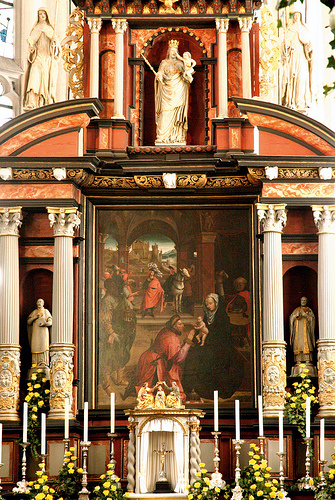
Although Saint Joseph was a carpenter it can be a challenge to find him working as such in many paintings of the Holy Family. Prior to his rejuvenation during the Counter-Reformation he was often an ancillary figure, off to the side, as Jesus and Mary were venerated. In paintings of the Nativity is wasn’t uncommon to see Saint Joseph mingling with the livestock or peering over a wattle wall at the newborn Jesus. Sometimes Joseph was making soup.
Finding good workworking scenes was a matter of studying the details of the many paintings and manuscripts that were vetted for inclusion in “Ingenious Mechanicks.” First, I had to find Saint Joseph, then figure out what he was doing.
The painting above is a good example of how it can be difficult to find Saint Joseph. Take away the many decorative elements and look only at the painting. Two of the three Magi are in the foreground and in the center middle ground the third has just dismounted his horse. Where is Joseph?
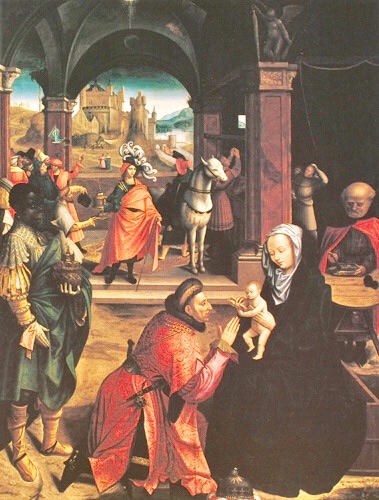
Oh, there he is, sqeezed off to the right side, holding a plane while standing at his bench. Without the bench and plane (and no halo) we wouldn’t know it was Saint Joseph.
The next three paintings were put into a timeline that I used to write my chapter (that would be Chapter 4). The time line was used to determine possible patterns of when and where low workbenches were found.

The Merode Altarpiece is legend among woodworkers. And it is fortunate that the three panels are still together for the viewer to see the entire story. The center panel depicting the Annunciation is the main event, however, Saint Joseph is not usually seen when the angel appears to Mary. Which makes me think if the panel with Saint Joseph was separated from the triptych would we know it was Saint Joseph? Anyway, I’m assuming Joseph lives in a different part of the house and has squeezed into his own mini-workshop. With incredible detail we can see his bench, tools, the two mousetraps already made and a work in progress.
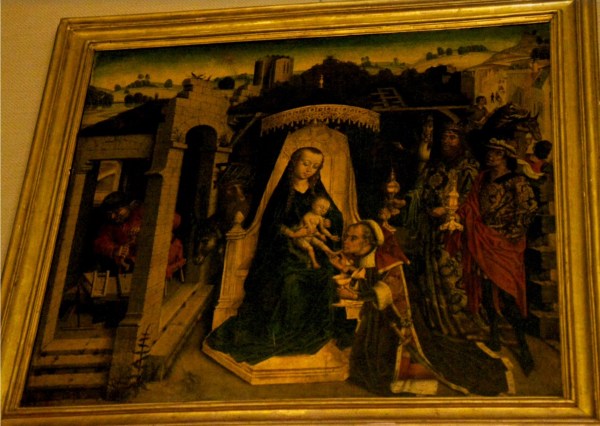
This is a good example of how I might first encounter a painting online: someone took a photo of the painting hanging on a museum wall. It turns out this is a center panel of a triptych that has apparently been separated. After lightening this a bit the darkness to the left reveals Saint Joseph.

There he is. Not too far from the livestock, sitting on his staked bench, a finished mousetrap on his workbench as he starts work on another project.

Saint Luke is the patron saint of artists and is usually depicted writing portions of the Bible or painting a portrait of Mary and the Baby Jesus. This is a painting I put aside to study later for my own amusement, not expecting to find Saint Joseph. When I did take a closer look at the background it seemed there was a possible Saint Joseph, but the resolution was too low to make out the details. I went to the RKD database and found a photo of the painting.
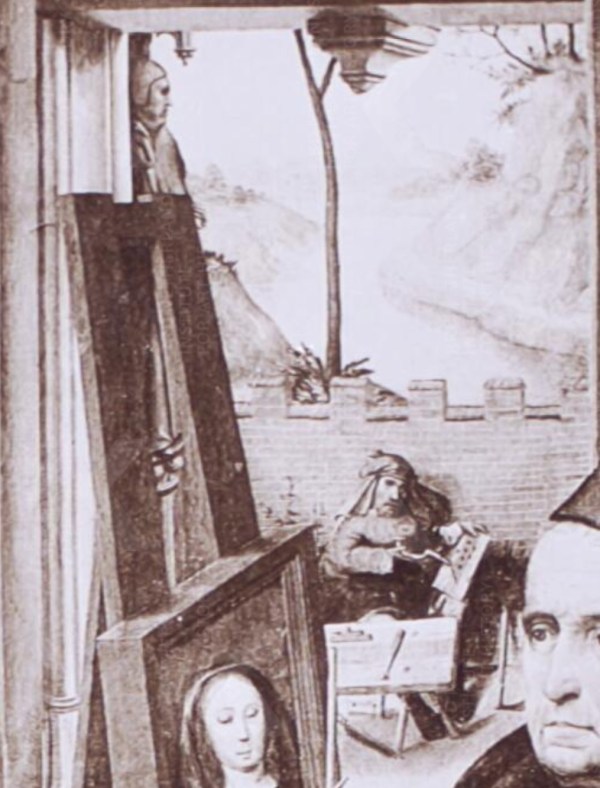
Saint Joseph looking none too happy has been relegated to the garden while Mary sits for her portrait. A few tools on the ground, a plane and chisel on the workbench and he is working on ghe same project as the other two Josephs (or the same Joseph, but at different times?).
To satisfy my curiosity I had to find out what the three Josephs were making. I found the answer on a French woodworking forum: a chaufferette. If it was cold weather and you didn’t have a sixteen-pound heater cat to curl itself around your feet you needed a chaufferette, otherwise known as a foot warmer.
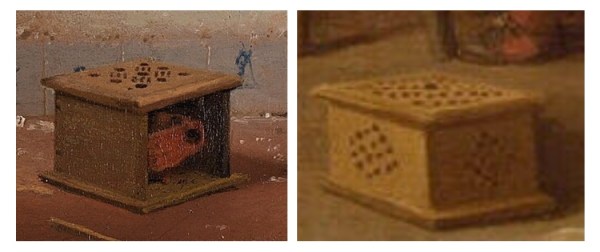
A wooden chaufferette was a ventilated box lined with metal into which hot coals were put. It might have a hinged top or open side. Chaufferettes could also be made of other materials.
After Saint Joseph’s make over in the Counter-Reformation he became a more important, and often central figure, in paintings. Although he might not be engaged in woodworking in every painting he is always easy to find.
Next time I’ll tell you about two ‘Ah-ha!’ moments that we had during research for “Ingenious Mechanicks.” I believe one instance caused Christopher Schwarz to wet his pants.
–Suzanne Ellison